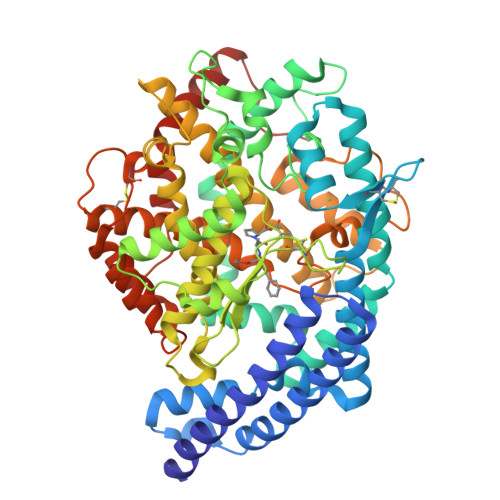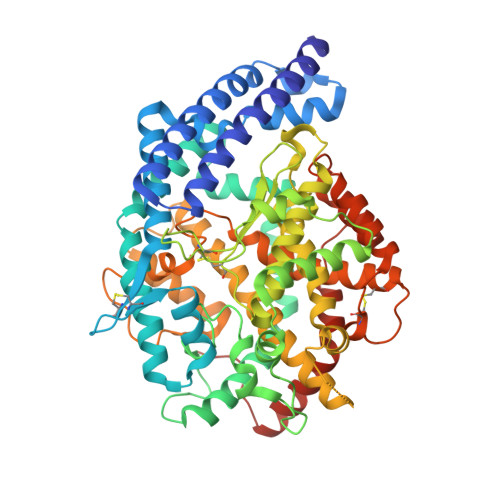Structural Details on the Binding of Antihypertensive Drugs Captopril and Enalaprilat to Human Testicular Angiotensin I-Converting Enzyme
Natesh, R., Schwager, S.L.U., Evans, H.R., Sturrock, E.D., Acharya, K.R.(2004) Biochemistry 43: 8718
- PubMed: 15236580
- DOI: https://doi.org/10.1021/bi049480n
- Primary Citation of Related Structures:
1UZE, 1UZF - PubMed Abstract:
Angiotensin converting enzyme (ACE) plays a critical role in the circulating or endocrine renin-angiotensin system (RAS) as well as the local regulation that exists in tissues such as the myocardium and skeletal muscle. Here we report the high-resolution crystal structures of testis ACE (tACE) in complex with the first successfully designed ACE inhibitor captopril and enalaprilat, the Phe-Ala-Pro analogue. We have compared these structures with the recently reported structure of a tACE-lisinopril complex [Natesh et al. (2003) Nature 421, 551-554]. The analyses reveal that all three inhibitors make direct interactions with the catalytic Zn(2+) ion at the active site of the enzyme: the thiol group of captopril and the carboxylate group of enalaprilat and lisinopril. Subtle differences are also observed at other regions of the binding pocket. These are compared with N-domain models and discussed with reference to published biochemical data. The chloride coordination geometries of the three structures are discussed and compared with other ACE analogues. It is anticipated that the molecular details provided by these structures will be used to improve the binding and/or the design of new, more potent domain-specific inhibitors of ACE that could serve as new generation antihypertensive drugs.
Organizational Affiliation:
Department of Biology and Biochemistry, University of Bath, Claverton Down, Bath BA2 7AY, United Kingdom.






















